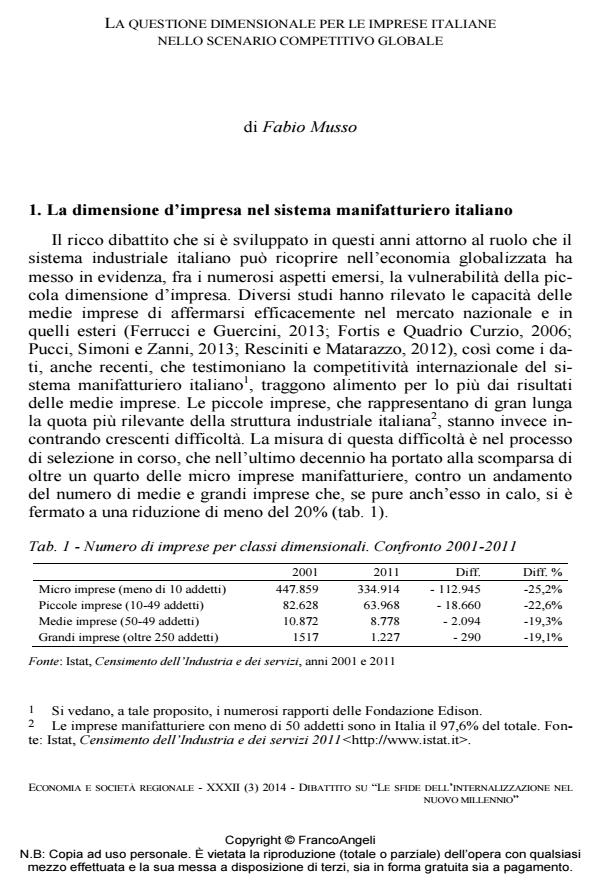La questione dimensionale per le imprese italiane nello scenario competitivo globale
Journal title ECONOMIA E SOCIETÀ REGIONALE
Author/s Fabio Musso
Publishing Year 2015 Issue 2014/3
Language Italian Pages 8 P. 159-166 File size 159 KB
DOI 10.3280/ES2014-003016
DOI is like a bar code for intellectual property: to have more infomation
click here

FrancoAngeli is member of Publishers International Linking Association, Inc (PILA), a not-for-profit association which run the CrossRef service enabling links to and from online scholarly content.
Fabio Musso, La questione dimensionale per le imprese italiane nello scenario competitivo globale in "ECONOMIA E SOCIETÀ REGIONALE " 3/2014, pp 159-166, DOI: 10.3280/ES2014-003016